Apple Vision Pro: price, release date, and everything we know about the VR headset
The Apple Vision Pro is here
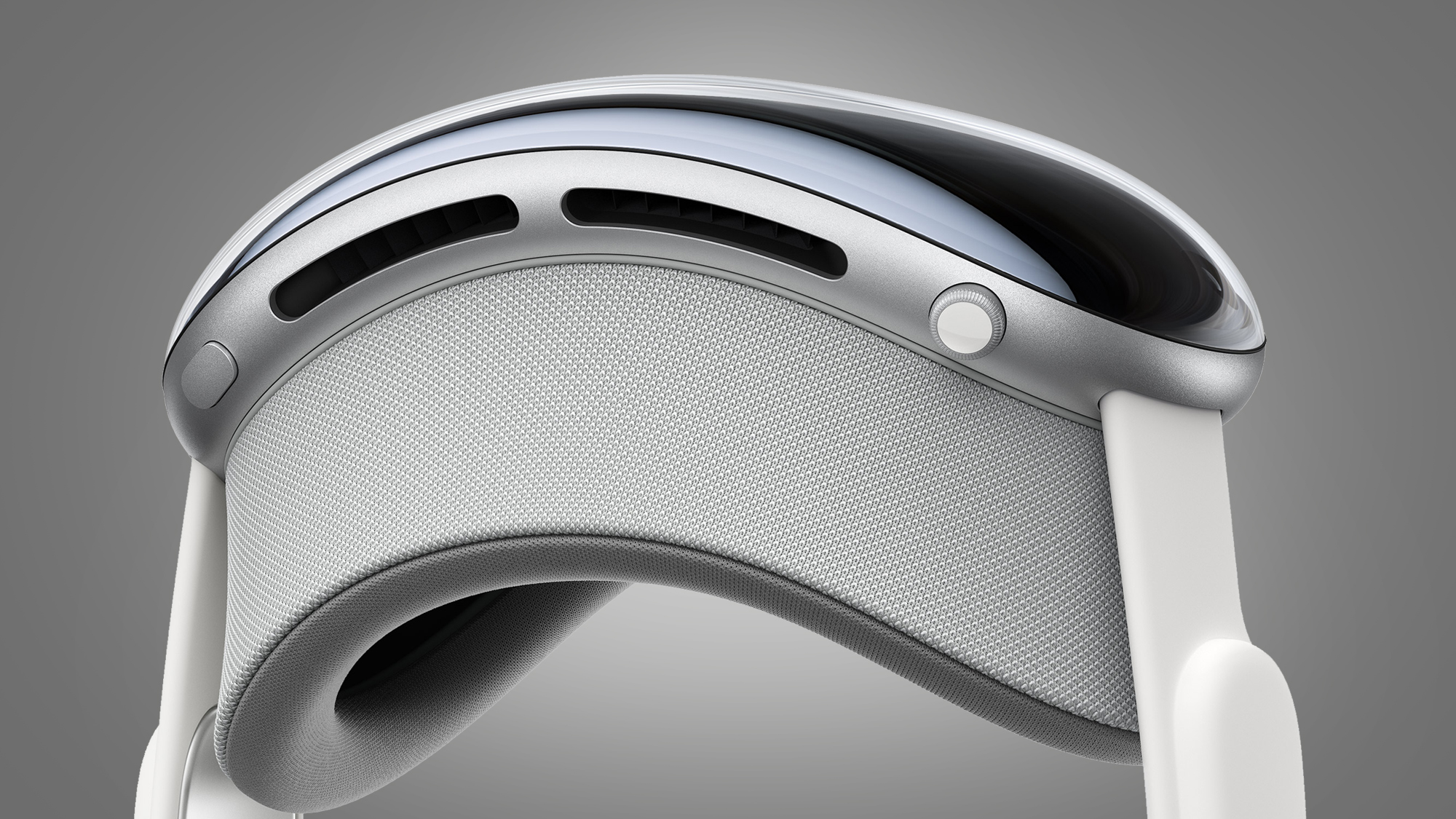
After years of waiting the Apple Vision Pro is finally here – we’ve had the chance to use it, and you can read our Apple Vision Pro review for our full thoughts – and it’s pretty darn impressive.
We celebrated the headset’s innovative design, M2 chipset, and impressive features –and we were amazed by the immersive trip provided by watching our own spatial video on Vision Pro. But it will cost an arm and a leg starting at $3,499 (around £2,800 / AU$5,300) which is considerably more expensive than Meta’s latest XR headset the Meta Quest 3 (which costs $499.99 / £479.99 / AU$799.99).
- Mixed reality headset
- Dual M2 and R1 chip setup
- 4K resolution per eye
- No controllers, uses hand tracking and voice inputs
- External battery pack
- Two-hour battery life
- Starts at $3,499 (around £2,800 / AU$5,300)
- Runs on visionOS
But the Vision Pro isn’t just any old headset it’s a next-gen gadget for Apple diehards – something Apple has already proven with the iPhone 15 Pro’s ability to record spatial video for the headset. Meanwhile, the USB-C AirPods Pro 2 will unlock lossless audio for the headset. The Vision Pro will also unlock new ways to use the best MacBook and Macs by letting you see your screen on giant floating displays next to Vision Pro app windows
You can give it a try for yourself at Apple Stores, though if you want to order one you’ll have to wait. Just don’t be tempted to buy one of the Vision Pro headsets being sold on eBay for ridiculously high markups.
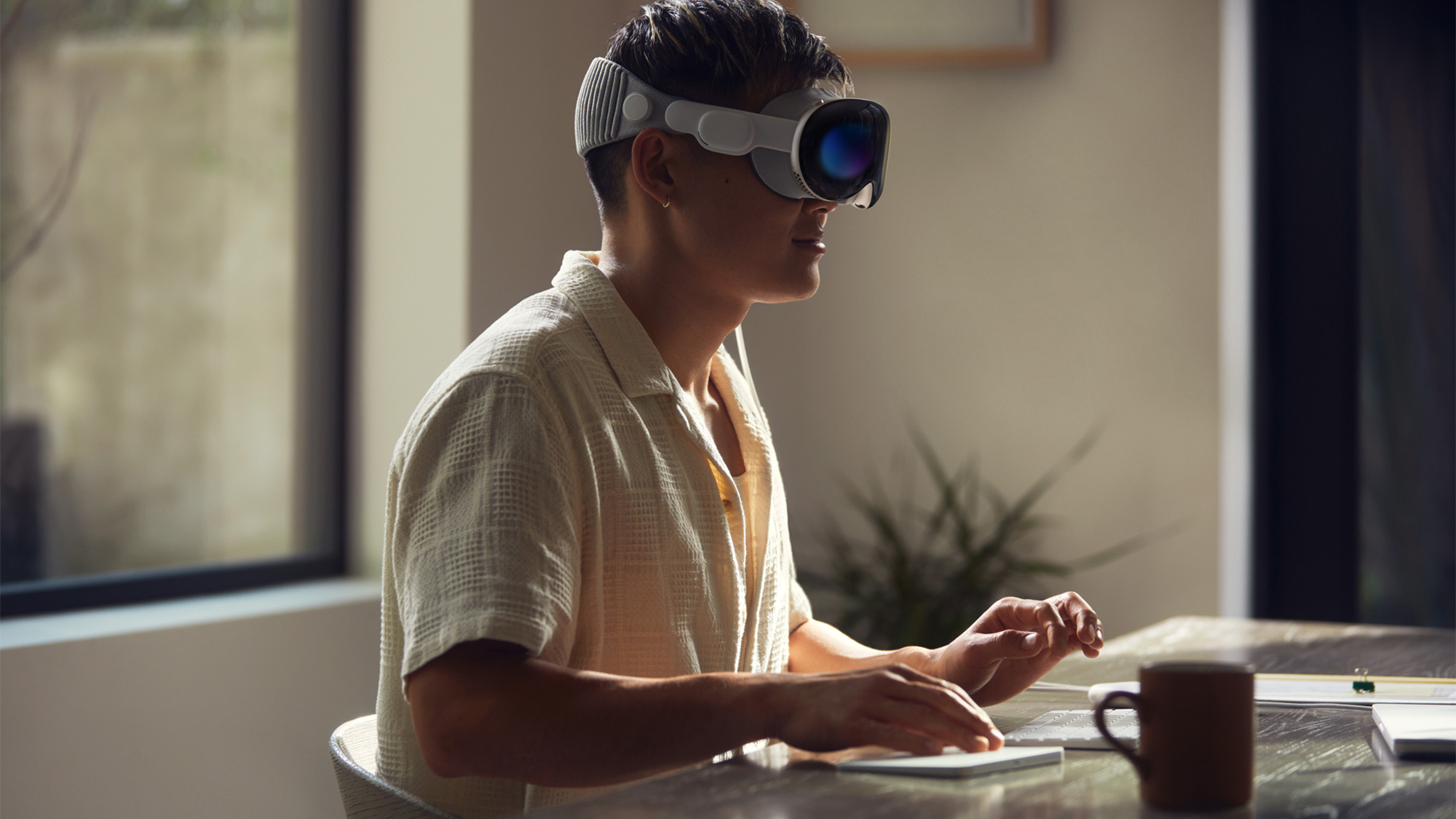
Apple Vision Pro latest news
The latest news is that Apple has given Vision Pro owners a way to reset their forgotten passcodes without needing to stake the headset to an Apple Store (or ship it to Apple).
Previously there was no on-headset way to erase all your data and remove the passcode if you forgot what it was and couldn't use Optic ID, but now Apple has added the ability to wipe the Vision Pro if you enter your passcode incorrectly too many times.
Additionally, reports suggest Apple sold 200,000 Vision Pros in just 10 days which is no mean feat. Despite this early success, there are lots of reports about people sending the headset back to Apple but this could be a good thing as Apple is asking them for feedback that could be used to make the Vision Pro 2 better.
Get daily insight, inspiration and deals in your inbox
Sign up for breaking news, reviews, opinion, top tech deals, and more.
Apple Vision Pro: what you need to know
Vision Pro release date: February 2, 2024
Vision Pro headset price: Starts at $3,499 (around £2,800 / AU$5,300).
Vision Pro headset specs: Apple's headset uses two chipsets, an M2 and a new R1 to handle regular software and its XR capabilities respectively. It also has dual 4K displays.
Vision Pro headset design: The Vision Pro has a similar design to other VR headsets, with a front panel that covers your eyes, and an elastic strap. One change from the norm is that it has an outer display to show the wearer's eyes.
Vision Pro headset battery life: It lasts for up to two hours on a full charge using the official external battery pack.
Vision Pro headset controllers: You don't need controllers – instead you'll use your eyes, hands, and voice to control its visionOS software.
Apple Vision Pro: price and release date
Apple says the Vision Pro starts at $3,499 (that's around £2,800 / AU$5,300). If you want to buy Zeiss Optical Inserts – a necessity for glasses wearers – you'll also need to cough up $99 for reading lenses and $149 for prescription lenses.
This base price will get you 256GB of storage. If you want extra Apple has also released a 512GB model for $3,699, and a 1TB model for $3,899. Besides the extra storage, there don't appear to be any other differences between the three models.
Apple Vision Pro preorders went live in the US at 5 am PT / 8 am ET on January 19, 2024, and it's still available to buy right now, though you might be waiting a while for it to ship.
The mixed reality headset is slowly becoming available in more regions too. On June 28, 2024 it went on sale in China, Japan, and Singapore. On July 12, it will also be rolling out across Australia, Canada, France, Germany, and the UK.
Apple Vision Pro: design
The Apple Vision Pro shares a lot of similarities with the current crop of best VR headsets. It has a large face panel that covers your eyes, and is secured to your head with a strap made from elasticated fabric, plastic, and padding.
But rather than the similarities, let's focus on the Vision Pro's unique design features.
The biggest difference VR veterans will notice is that the Vision Pro doesn't have a battery; instead, it relies on an external battery pack. This is a sort of evolution of the HTC Vive XR Elite's design, which allowed the headset to go from being a headset with a battery in its strap to a battery-less pair of glasses that relies on external power.
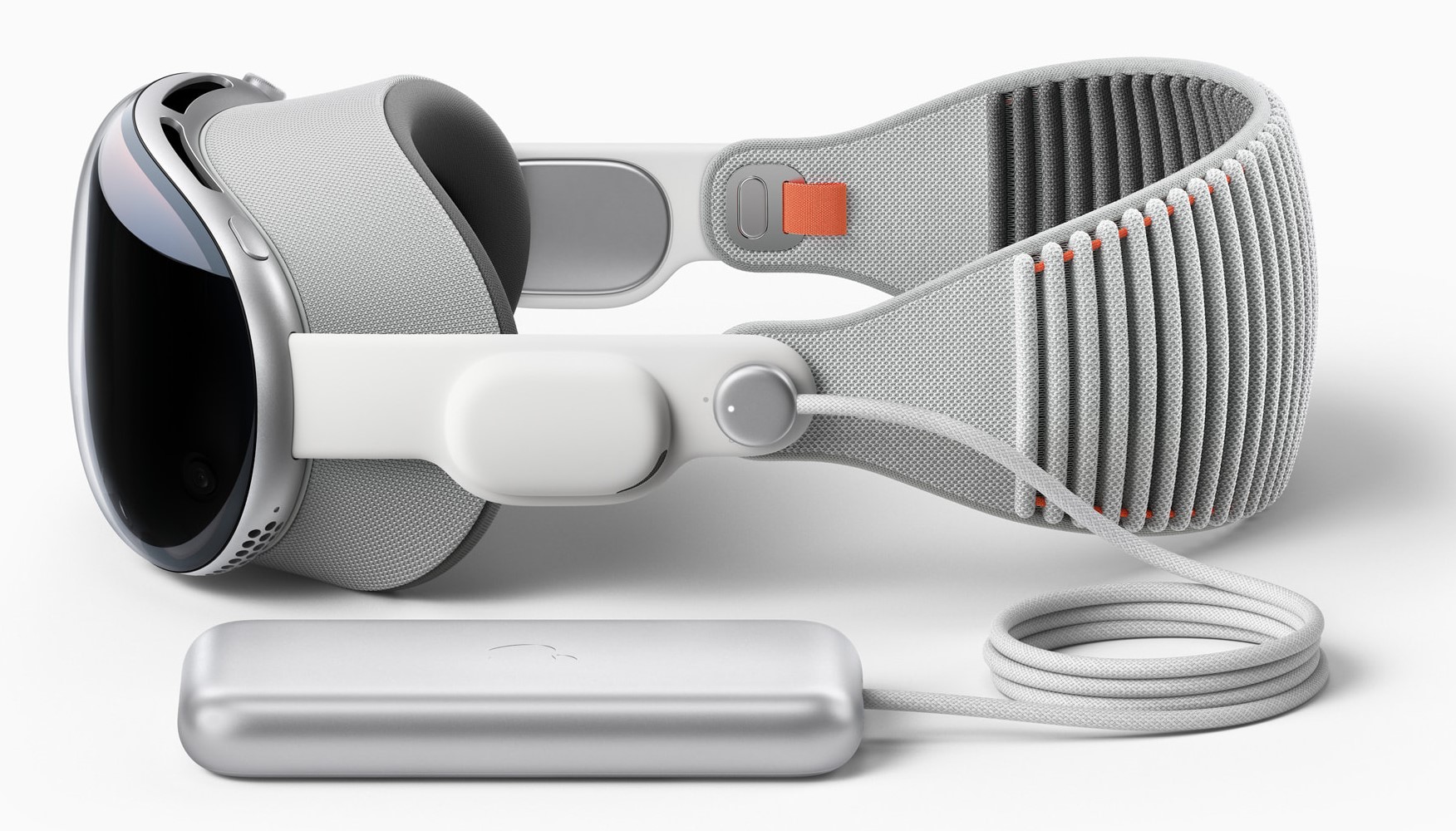
This battery pack will provide roughly two hours of use on a full charge according to Apple, and is small enough to fit in the wearer's pocket. It'll connect to the headset via a cable, which is a tad unseemly by Apple’s usual design standards, but what this choice lacks in style it should make up for in comfort.
We found the Meta Quest Pro to be pretty comfy, but wearing it for extended periods of time can put a strain on your neck – just ask our writer who wore the Quest Pro for work for a whole week.
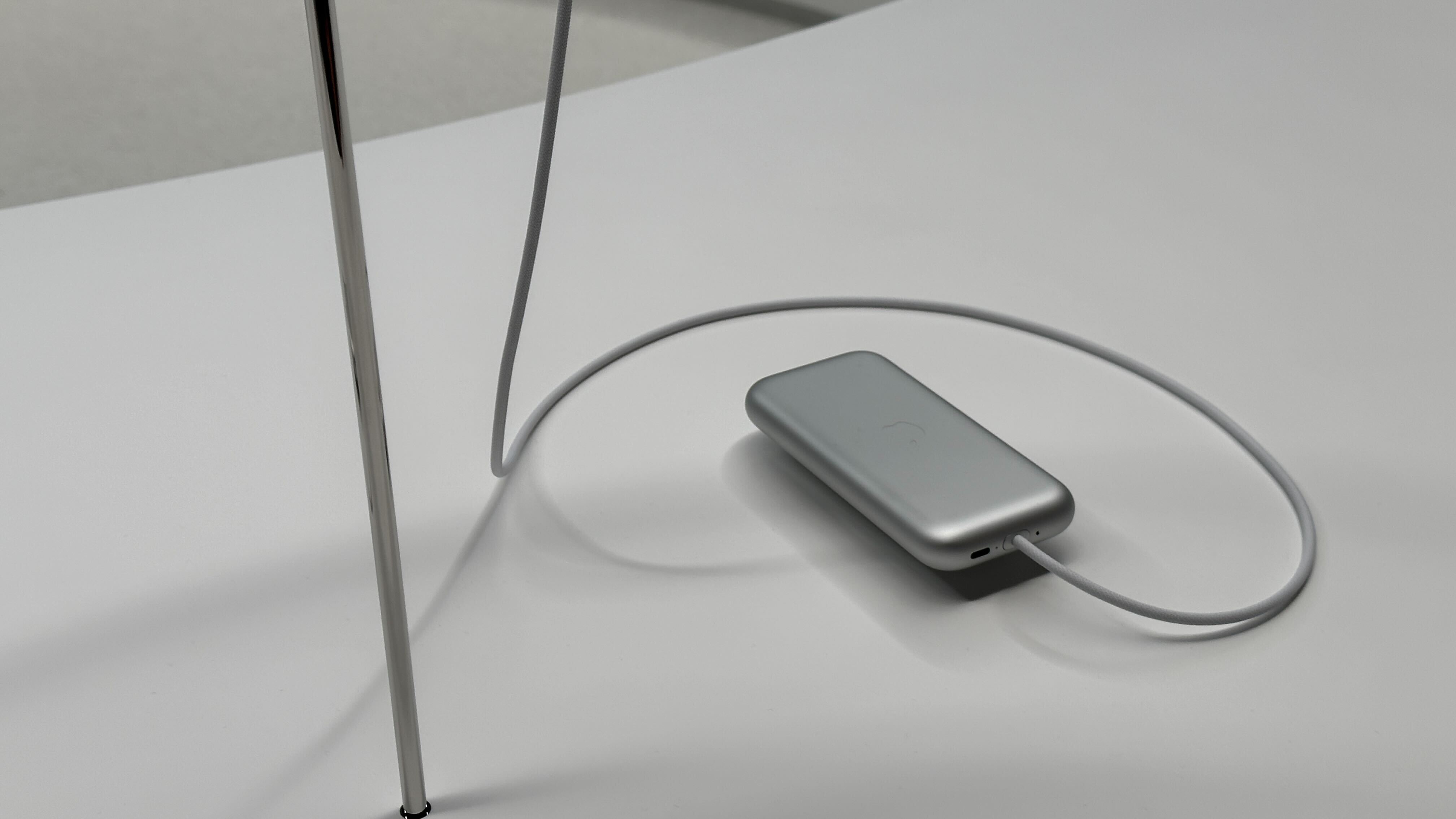
If you buy a Vision Pro you'll find that your box lacks something needed for other VR headsets, and that's controllers. That's because the Vision Pro relies on tracking your hand and eye movements, as well as voice inputs, to control its apps and experiences. It'll pick up these inputs using its array of 12 cameras, five sensors, and six microphones.
That said, a recent patent filing suggests that this might not always be the case: it seems future versions of the Vision Pro may work with finger peripherals resembling thimbles. Specifically, these fingertip controllers would allow you to precisely interact with a virtual trackpad mapped out by the headset. It remains to be seen whether this is a theoretical accessory or an admission that Apple's finger tracking tech isn't effective enough for fine-grained work.
The last design detail of note is the Vision Pro's Eyesight display. It looks pretty odd, maybe even a bit creepy, but we're reserving judgment until we've had a chance to try it out.
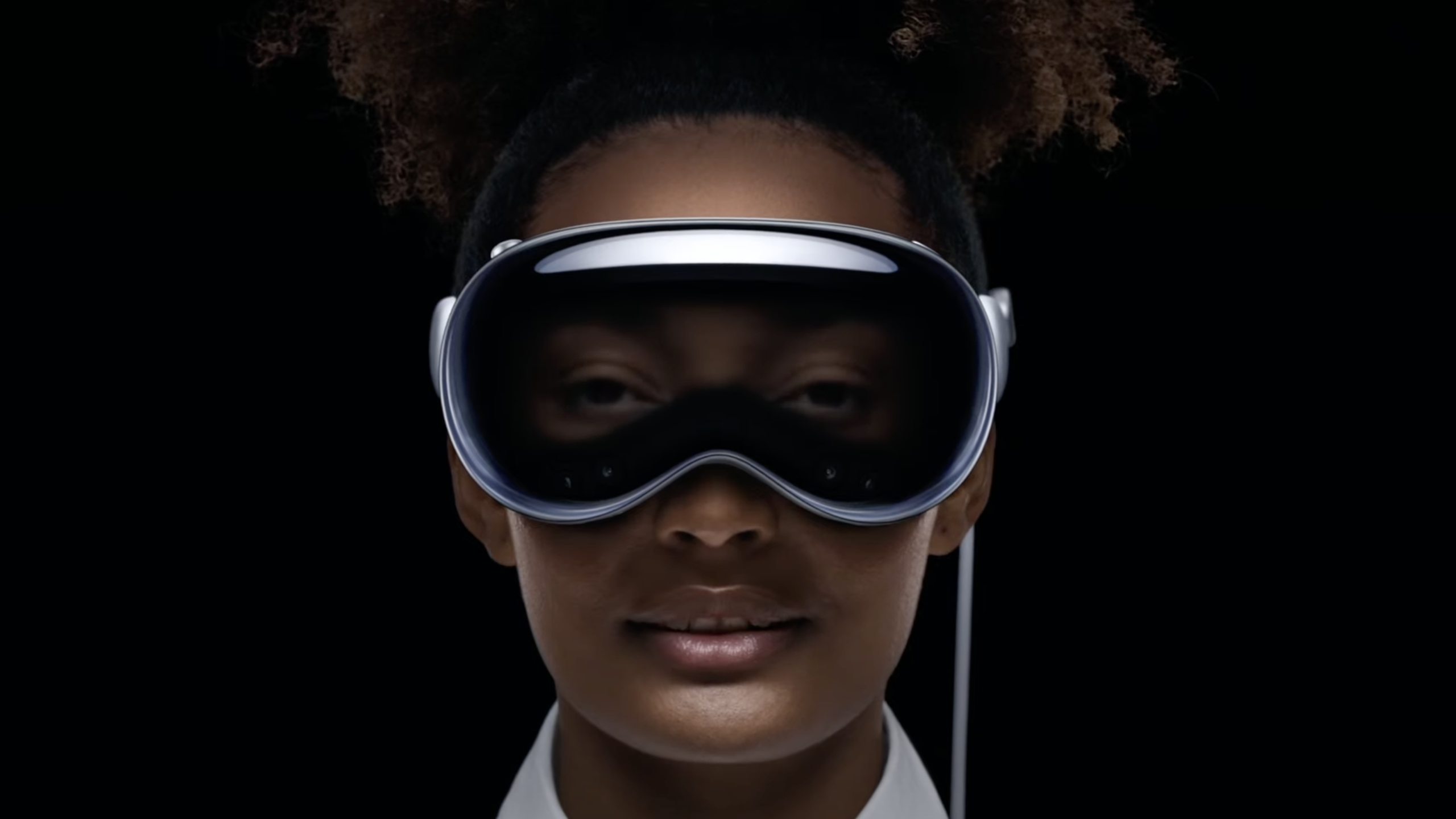
When a Vision Pro wearer is using AR features and can see the real world, nearby people will see their eyes 'through' the headset's front panel (it's actually a screen showing a camera view of the eyes, but based on Apple's images you might be convinced it's a simple plane of glass). If they're fully immersed in an experience, onlookers will instead see a cloud of color to signify that they're exploring another world.
As for future revisions, talk has already started to circulate about the look of the Vision Pro 2. MacRumours has reported that the second-gen device will look very similar to the first, but may feature flatter speakers, vent strips instead of holes, and simpler rear straps that resemble those found on backpacks.
Apple Vision Pro: specs and features
As the rumors had suggested, the Apple Vision Pro headset comes with some impressive specs to justify its sky-high price.
First, the Vision Pro uses two chipsets to power its experiences. One is an M2 chip, the same one you'll find in the Apple iPad Pro (2022), and some of the best MacBooks and Macs.
This powerful processor handles the apps and software you're running on the Vision Pro. Meanwhile, the R1 chipset deals with the mixed reality side of things, processing the immersive elements of the Vision Pro that turn it from a glorified wearable Mac display to an immersive "spatial computer".
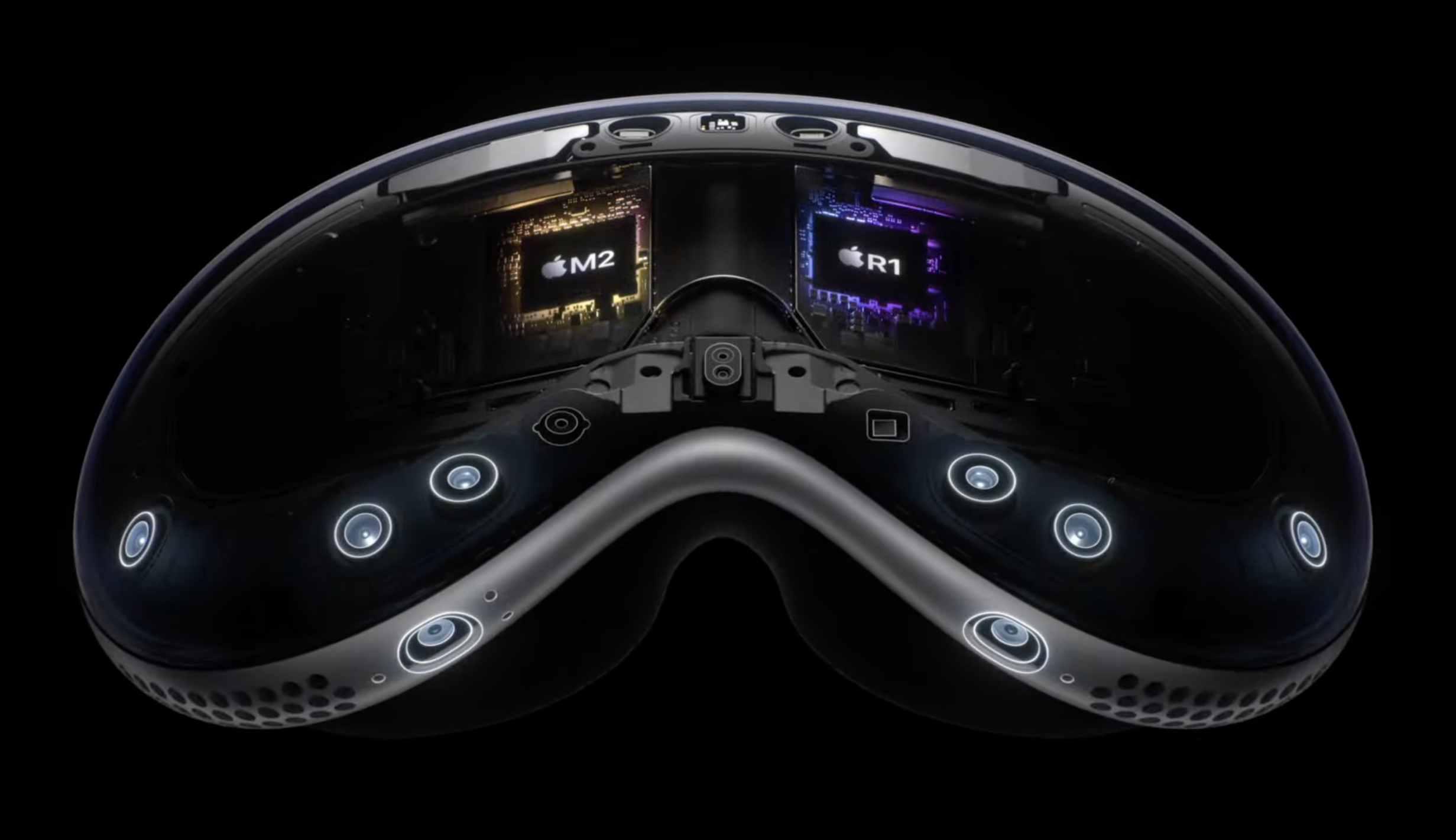
On top of these chips, the Vision Pro has crisp 4K micro-OLED displays – one per eye – that offer roughly 23 million pixels each. According to Apple the Vision Pro's display fits 64 pixels into the same space that the iPhone's screen fits one single pixel, and this could eliminate the annoying screen-door effect that affects other VR headsets.
This effect occurs when you're up close to a screen and you can start to see the gaps between the pixels in the array; the higher the pixel density, the closer you can get before the screen door effect becomes noticeable.
These components will allow you to run an array of Apple software through Apple's new visionOS platform (not xrOS as was rumored). This includes immersive photos and videos, custom-made Disney Plus experiences, and productivity apps like Keynote.
You're able to play over 100 Apple Arcade titles on a virtual screen that's like your own private movie theatre. Disney Plus can beam 3D movies to the wearable screen, and there's a whole slew of productivity and entertainment apps on the Apple headset too.
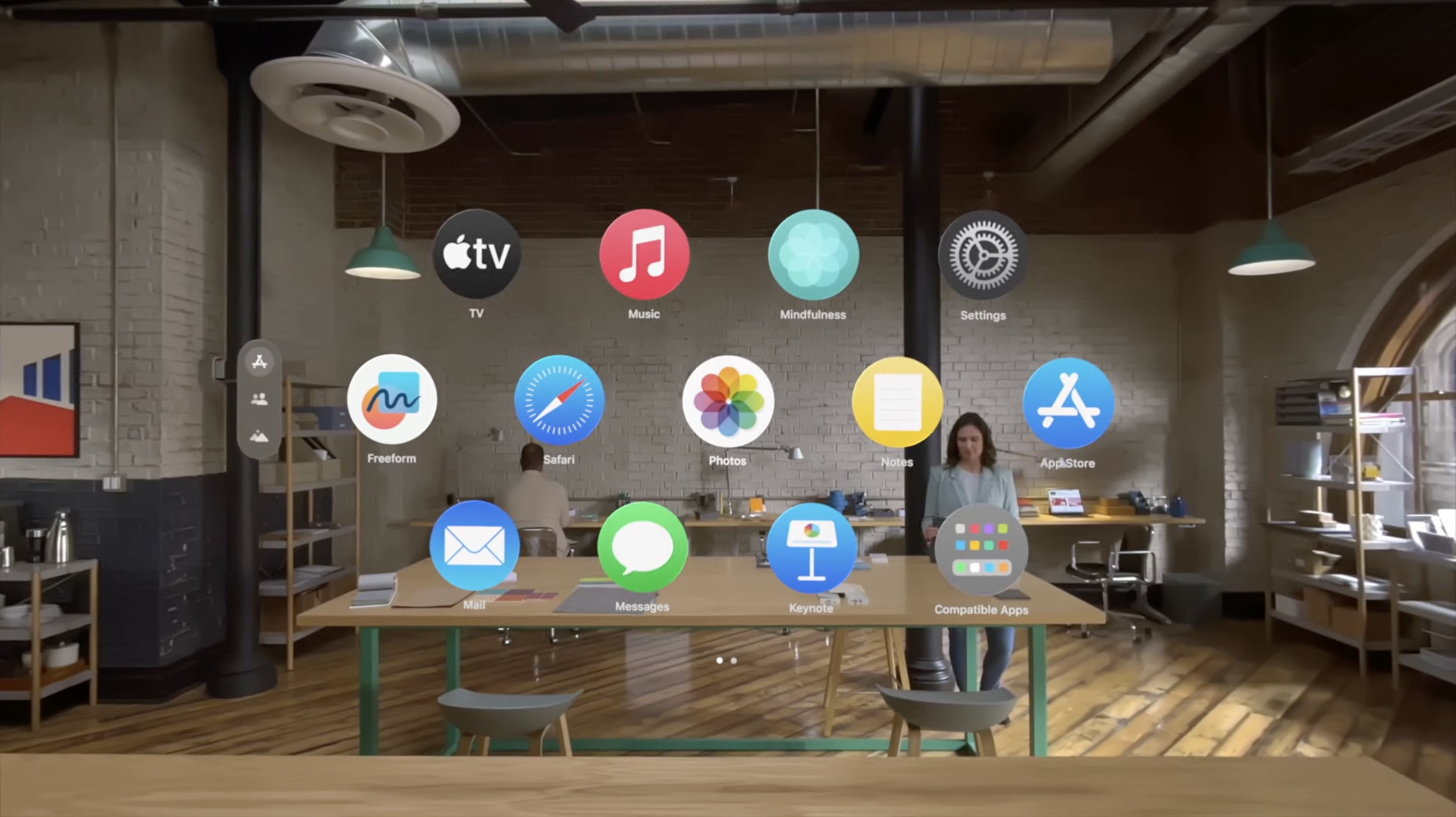
You can connect your Vision Pro headset to a Mac via Bluetooth. When using this feature you'll be able to access your Mac apps and see your screen on a large immersive display, and it'll sit alongside other Vision Pro apps you're using. Apple says this setup helps you be more productive than you've ever been.
Apple Vision Pro: your questions answered
We've answered all of the basic questions about the Apple Vision Pro's release date, price, specs and more above, but you may understandably still have some more specific or broader ones.
To help, we've taken all of the most popular Vision Pro questions from Google and social media and answered them in a nutshell below.
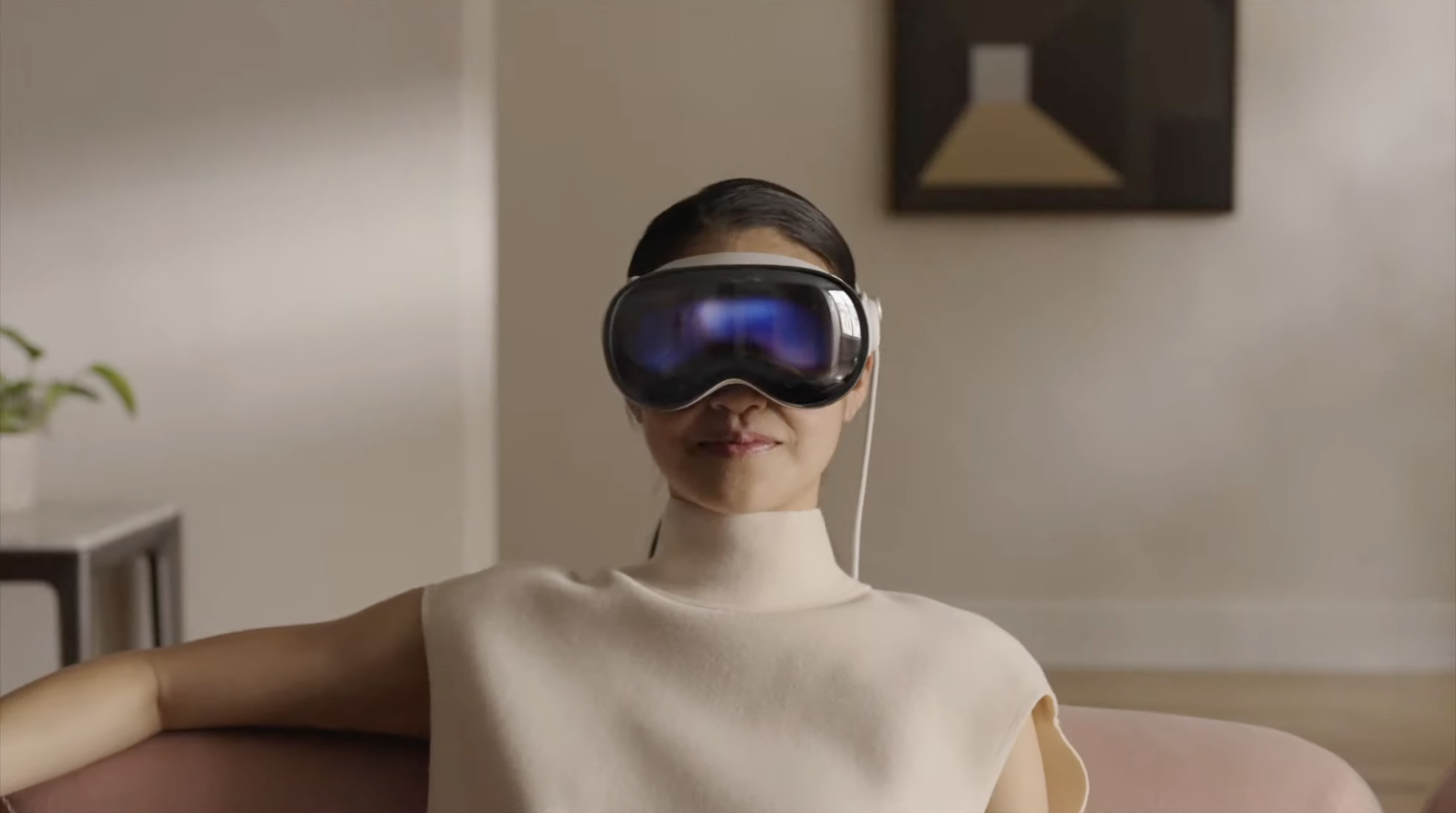
What is the point of Apple Vision Pro?
Apple says that the point of the Vision Pro is to introduce a "new era of spatial computing". It's a standalone, wearable computer that aims to deliver new experiences for watching TV, working, reliving digital memories, and remotely collaborating with people in apps like FaceTime.
But it's still early days. And there arguably isn't yet a single 'point' to the Vision Pro. At launch, it'll be able to do things like give you a huge, portable monitor for your Apple laptop, or create a home cinematic experience in apps like Disney Plus. However, like the first Apple Watch, it'll be up to developers and users to define the big new use cases for the Vision Pro.
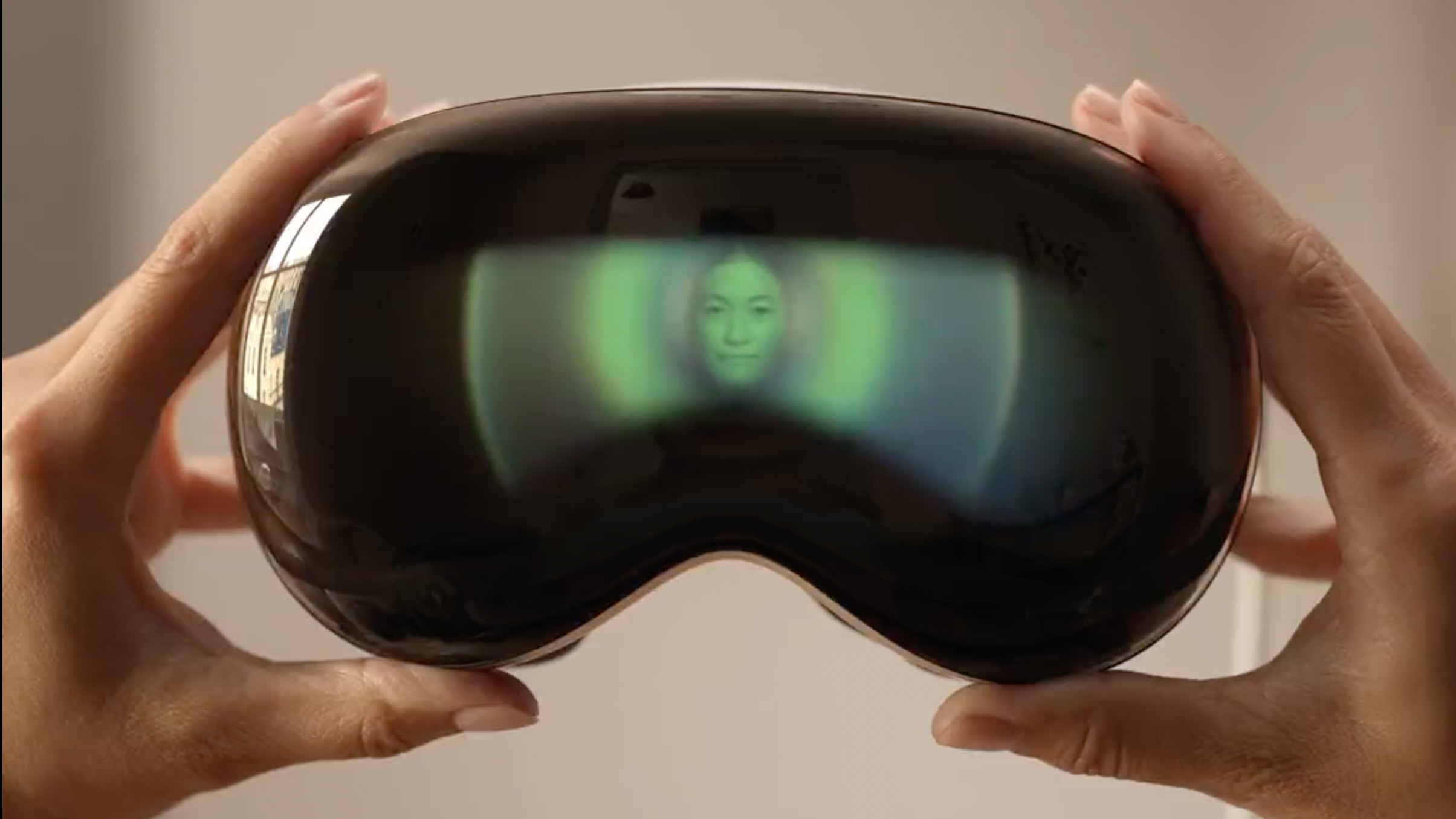
How much does an Apple Vision Pro cost?
The Vision Pro starts at $3,499 (that's around £2,800 / AU$5,300) for 356GB of storage. If you want extra Apple has also released a 512GB model for $3,699, and a 1TB model for $3,899.
If you want to buy Zeiss Optical Inserts – a necessity for glasses wearers – that'll cost you an extra $99 for reading lenses and $149 for prescription lenses.

Does Apple Vision Pro work with glasses?
The Apple Vision Pro does work for those who wear glasses, although there are some things to be aware of. If you wear glasses you won't wear them with the headset. Instead, you'll need to buy some separate optical inserts that attach magnetically to the Vision Pro's lenses. Apple hasn't yet announced the pricing for these, currently only stating that "vision correction accessories are sold separately".
Apple says it'll offer a range of vision correction strengths that won't compromise the display quality or the headset's eye-tracking performance. But it also warns that "not all prescriptions are supported" and that a "valid prescription is required". So while the Vision Pro does work well for glasses wearers, there are some potential downsides.
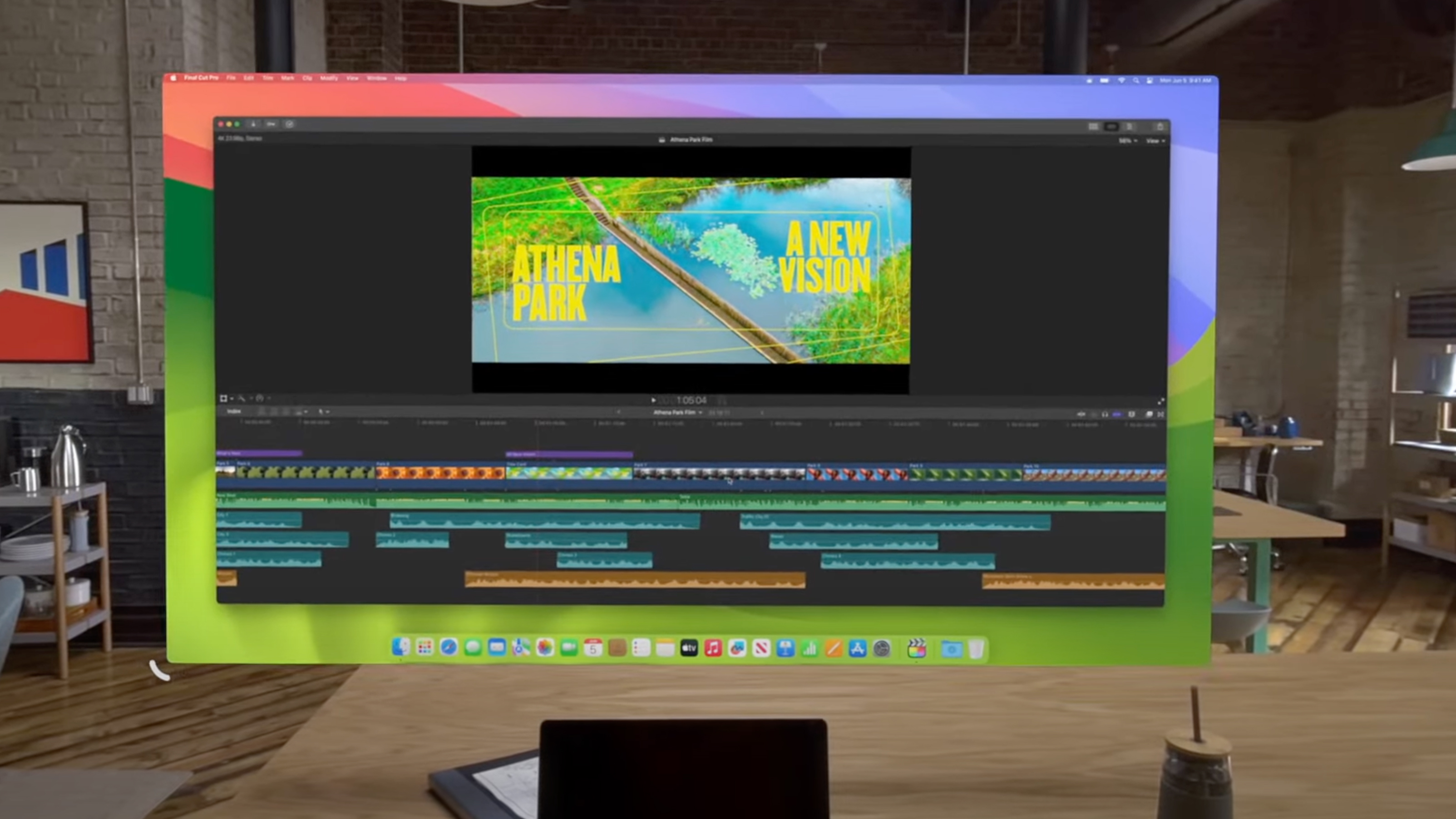
Is Apple Vision Pro a standalone device?
The Apple Vision Pro is a standalone device with its own visionOS operating system and doesn't need an iPhone or MacBook to run. This is why Apple calls the headset a "spatial computer".
That said, having an iPhone or MacBook alongside a Vision Pro will bring some benefits. For example, to create a personalized spatial audio profile for the headset's audio pods, you'll need an iPhone with a TrueDepth camera.
The Vision Pro will also give MacBook owners a large virtual display that hovers above their real screen, an experience that won't be available on other laptops. So while you don't need any other Apple devices to use the Vision Pro, owning other Apple-made tech will help maximize the experience.
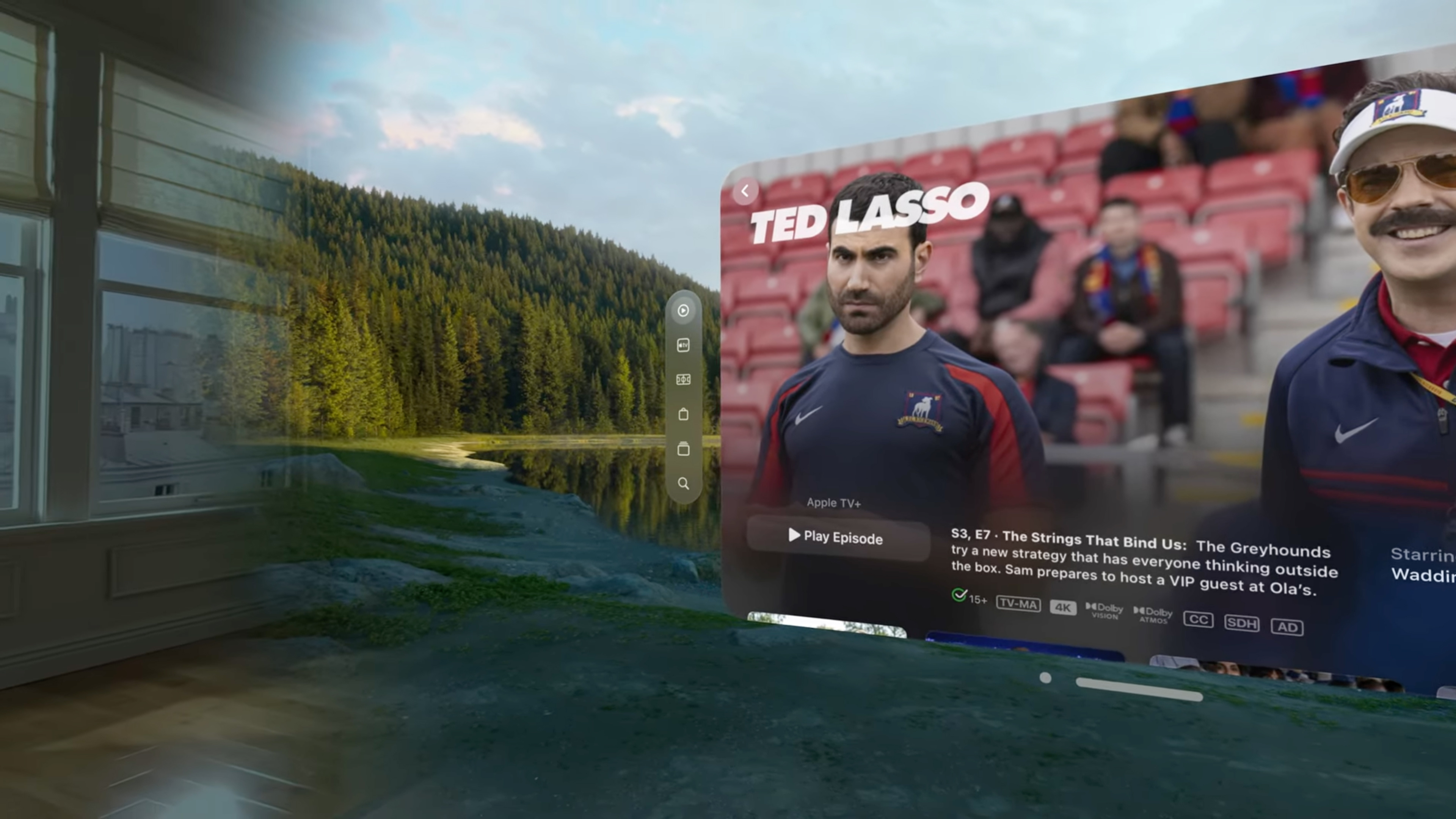
Is Apple Vision Pro VR or AR?
The Apple Vision Pro offers both VR and AR experiences, even if Apple doesn't use those terms to describe them. Instead, Apple says it creates "spatial experiences" that "blend the digital and physical worlds". You can control how much you see of both using its Digital Crown on the side.
Turning the Digital Crown lets you control how immersed you are in a particular app. This reveals the real world behind an app's digital overlays, or extends what Apple calls 'environments'. These spread across and beyond your physical room, for example giving you a view over a virtual lake.
While some of the examples shown by Apple look like traditional VR, the majority err towards augmented reality, combining your real-world environment (captured by the Vision Pro's full-color passthrough system) with its digital overlays.
Preview videos of the Vision Pro's Yosemite Environment have surfaced on X (formerly Twitter), illustrating the sort of immersive tranquility you'll be able to explore with Apple's headset. The idea is that you can use these virtual spaces to tune out the world, or to serve as relaxing backdrops to your apps.
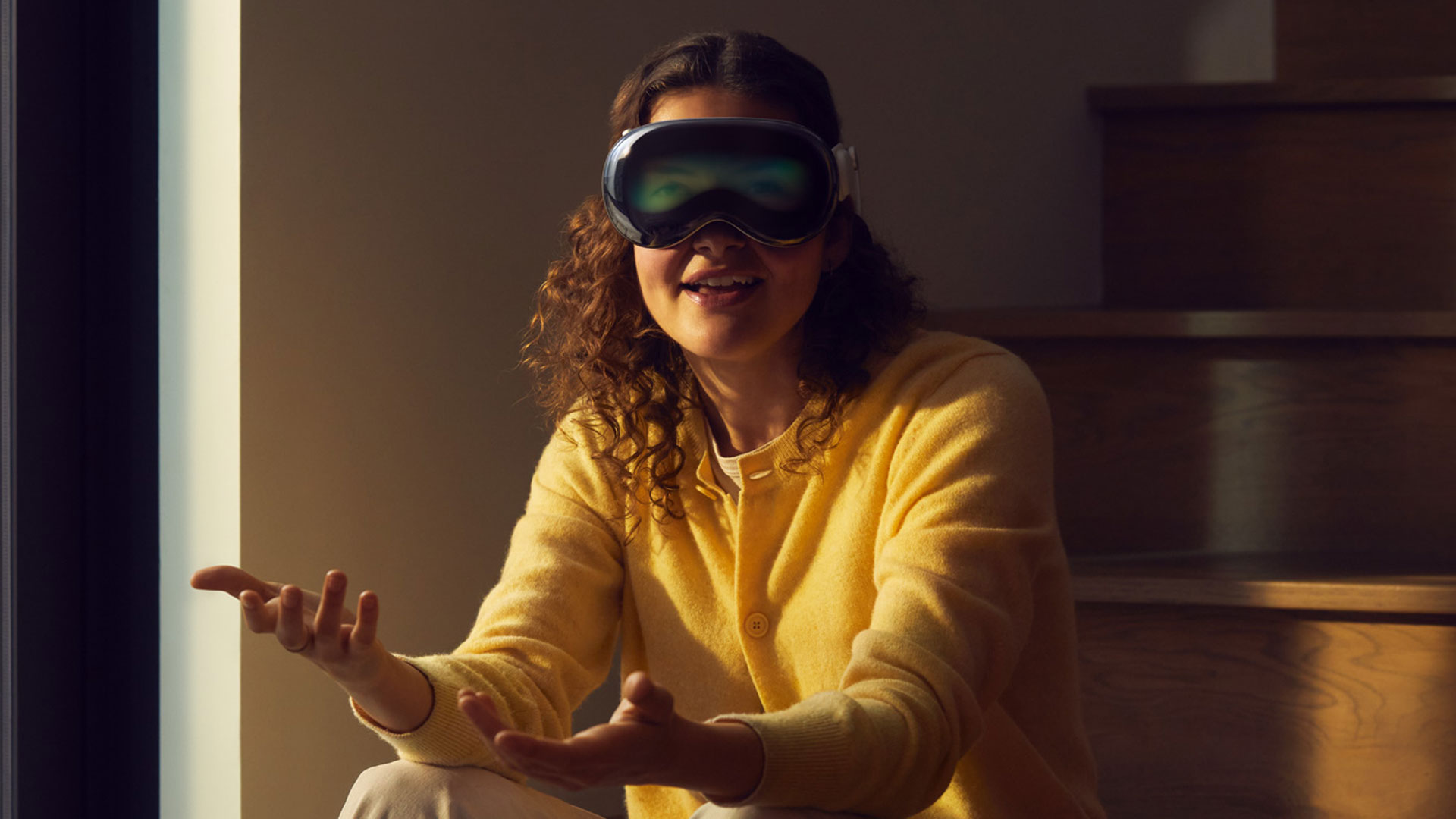
Is Apple Vision Pro see through?
The front of the Apple Vision Pro isn't see-through or fully transparent, even though a feature called EyeSight creates that impression. The front of the headset is made from laminated glass, but behind that lens is an outward-facing OLED screen.
It's this screen that will show a real-time view of your eyes (captured by the cameras inside the headset) to the outside world if you're in augmented reality mode. If you're enjoying a fully immersive, VR-like experience like watching a movie, this screen will instead show a Siri-like graphic.
To help you look out through the headset, the Apple Vision Pro has a passthrough system that uses cameras on the outside of the goggles to give you a real-time, color feed of your environment. So while the headset feels like it's see-through, your view of the real world is digital.
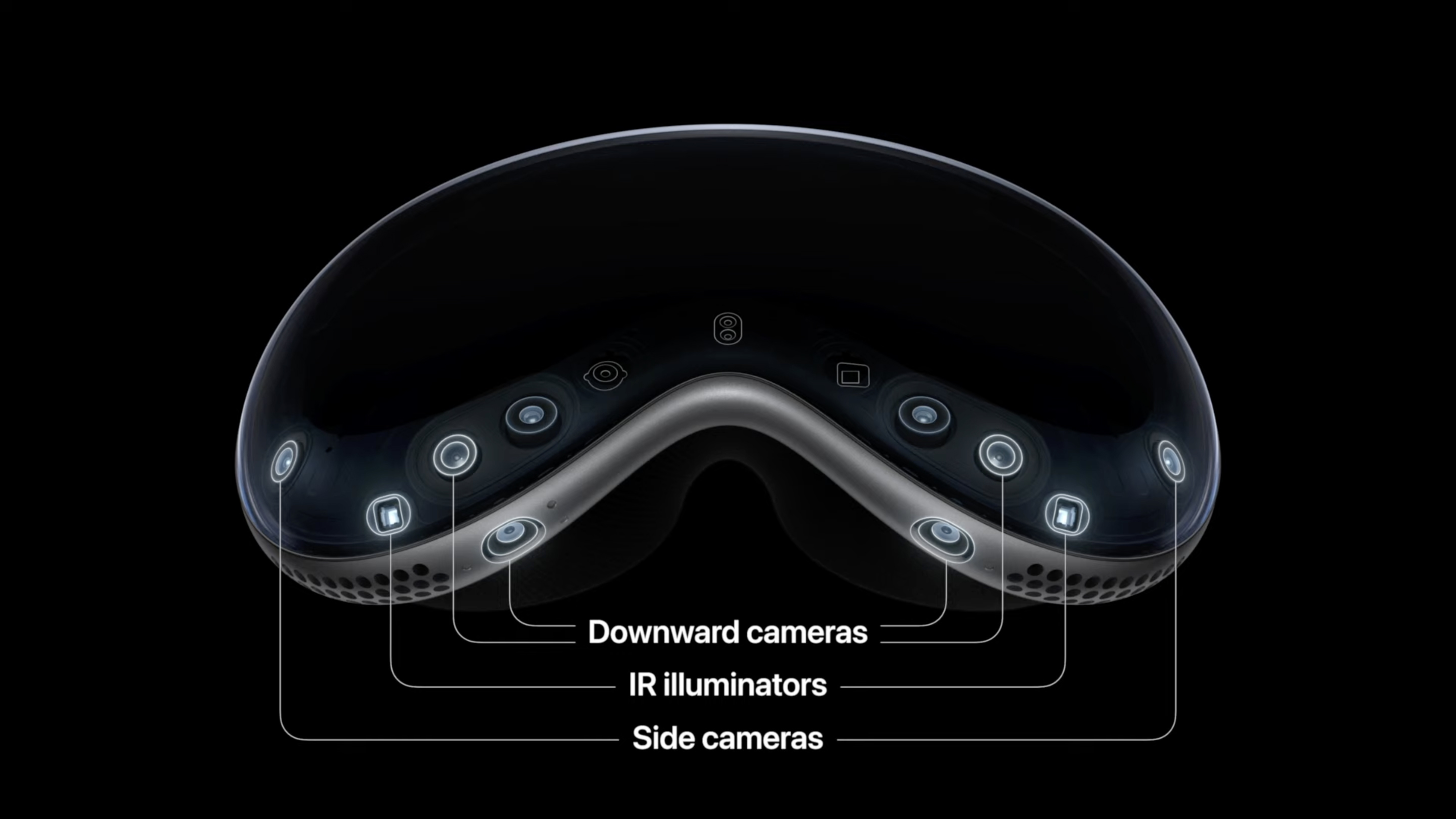
How does Vision Pro work?
The Apple Vision Pro uses a combination of cameras, sensors, and microphones to create a controller-free computing experience that you control using your hands, eyes, and voice.
The headset's forward-facing cameras capture the real world in front of you, so this can be displayed on its two internal lenses (Apple says these give you "more pixels than a 4K TV for each eye"). The Vision Pro's side and downward-facing cameras also track your hand movements, so you can control it with your hands – for example, touching your thumb and forefinger together to click.
But the really unique thing about the Vision Pro is its eye-tracking, which is powered by a group of infrared cameras and LED illuminators on the inside of the headset. This mean you can simply look at app icons or even smaller details to highlight them, then use your fingers or voice to type.

Hamish is a Senior Staff Writer for TechRadar and you’ll see his name appearing on articles across nearly every topic on the site from smart home deals to speaker reviews to graphics card news and everything in between. He uses his broad range of knowledge to help explain the latest gadgets and if they’re a must-buy or a fad fueled by hype. Though his specialty is writing about everything going on in the world of virtual reality and augmented reality.
- Chris Rowlands
- Mark WilsonSenior news editor

